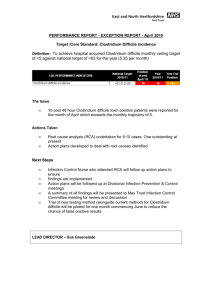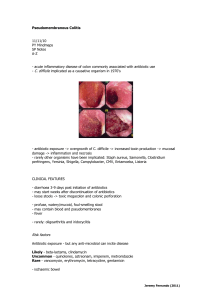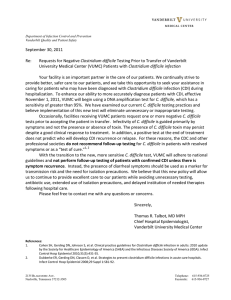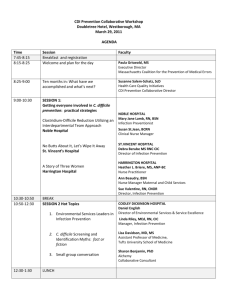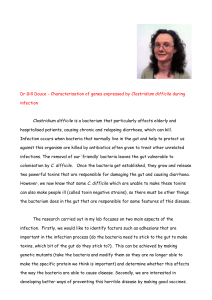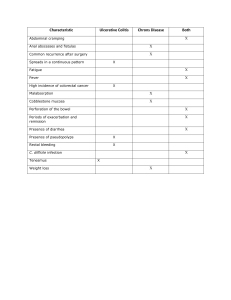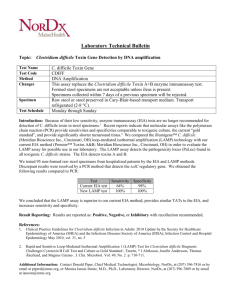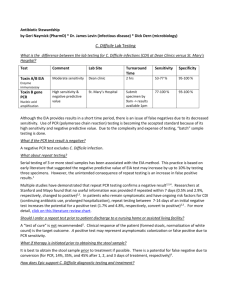Do Patients with Chronic Clostridium Difficile Infections Have Differing Intestinal
advertisement
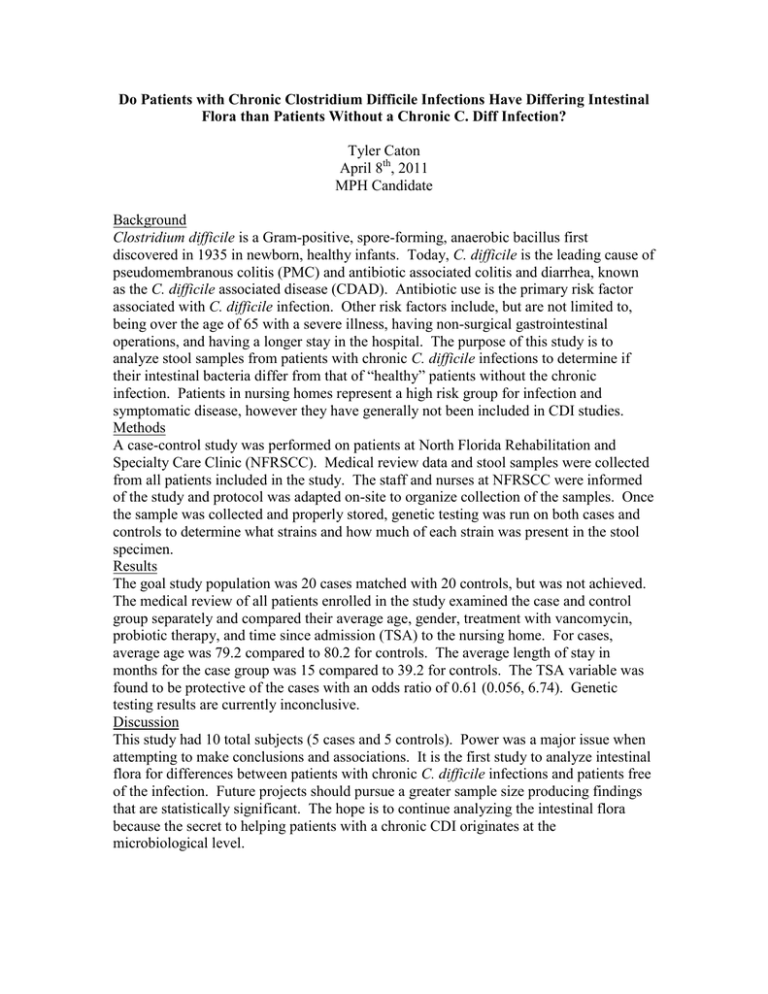
Do Patients with Chronic Clostridium Difficile Infections Have Differing Intestinal Flora than Patients Without a Chronic C. Diff Infection? Tyler Caton April 8th, 2011 MPH Candidate Background Clostridium difficile is a Gram-positive, spore-forming, anaerobic bacillus first discovered in 1935 in newborn, healthy infants. Today, C. difficile is the leading cause of pseudomembranous colitis (PMC) and antibiotic associated colitis and diarrhea, known as the C. difficile associated disease (CDAD). Antibiotic use is the primary risk factor associated with C. difficile infection. Other risk factors include, but are not limited to, being over the age of 65 with a severe illness, having non-surgical gastrointestinal operations, and having a longer stay in the hospital. The purpose of this study is to analyze stool samples from patients with chronic C. difficile infections to determine if their intestinal bacteria differ from that of “healthy” patients without the chronic infection. Patients in nursing homes represent a high risk group for infection and symptomatic disease, however they have generally not been included in CDI studies. Methods A case-control study was performed on patients at North Florida Rehabilitation and Specialty Care Clinic (NFRSCC). Medical review data and stool samples were collected from all patients included in the study. The staff and nurses at NFRSCC were informed of the study and protocol was adapted on-site to organize collection of the samples. Once the sample was collected and properly stored, genetic testing was run on both cases and controls to determine what strains and how much of each strain was present in the stool specimen. Results The goal study population was 20 cases matched with 20 controls, but was not achieved. The medical review of all patients enrolled in the study examined the case and control group separately and compared their average age, gender, treatment with vancomycin, probiotic therapy, and time since admission (TSA) to the nursing home. For cases, average age was 79.2 compared to 80.2 for controls. The average length of stay in months for the case group was 15 compared to 39.2 for controls. The TSA variable was found to be protective of the cases with an odds ratio of 0.61 (0.056, 6.74). Genetic testing results are currently inconclusive. Discussion This study had 10 total subjects (5 cases and 5 controls). Power was a major issue when attempting to make conclusions and associations. It is the first study to analyze intestinal flora for differences between patients with chronic C. difficile infections and patients free of the infection. Future projects should pursue a greater sample size producing findings that are statistically significant. The hope is to continue analyzing the intestinal flora because the secret to helping patients with a chronic CDI originates at the microbiological level.
